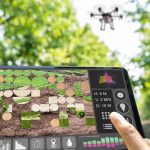Advanced Science’s latest article, “Learning Soft Millirobot Multimodal Locomotion with Sim‐to‐Real Transfer,” delves into a new simulation environment designed for magnetic soft millirobots. This environment is focused on transferring learned behaviors from a virtual setting to real-world applications. The study emphasizes the significance of these millirobots in minimally invasive medical procedures due to their ability to adapt and function in various terrains by manipulating magnetic fields. The researchers have also introduced a probabilistic method using Kullback-Leibler divergence for domain recognition, enabling the robots to adapt their movements autonomously in unknown environments.
Sim-to-Real Transfer Learning
Magnetic soft millirobots stand out for their multimodal locomotion, made possible through shape programming and external magnetic control. Traditional methods of adaptation rely heavily on hand-tuned signals, which are not always optimal. The newly proposed framework replaces these manual techniques with a data-driven simulation that learns the necessary actuation signals. This learned strategy is then transferred to the physical robot using Bayesian optimization and Gaussian processes.
At the core of this framework is a data-driven simulation environment that enables the periodic magnetic actuation signal to be learned in virtual settings. Once validated, these learned strategies are implemented in real-world scenarios. Bayesian optimization and Gaussian processes are utilized to fine-tune the actuation signals, ensuring that the transition from simulation to reality is as seamless as possible. This process is inherently more efficient and reduces experimental costs.
Adaptation in Unknown Environments
The simulation environment is further enhanced by a Kullback-Leibler divergence-based probabilistic method for domain recognition. This allows the magnetic soft millirobot to recognize and adapt to unknown terrains dynamically. By continuously adjusting its locomotion based on the surrounding environment, the robot can explore new actuation strategies that are otherwise unattainable through traditional methods.
This adaptive capability is crucial for real-world applications, where environmental conditions can vary unpredictably. The ability to recognize these changes and adjust accordingly gives these millirobots an edge in complex scenarios, making them invaluable for tasks requiring precision and adaptability. The probabilistic method ensures that the robot can operate efficiently, minimizing the need for extensive manual recalibration.
Comparisons to earlier reports show significant advancements. Previous studies focused mainly on hand-tuned signals, which were labor-intensive and less flexible. The introduction of a simulation-to-real transfer learning framework marks a shift towards more autonomous and intelligent systems. Earlier work did not emphasize probabilistic methods, making this new approach notably more robust.
Past research emphasized static environments, limiting the scope of applications. The current study broadens the horizons by incorporating adaptive mechanisms that respond in real-time. This is particularly beneficial for medical applications, where the environment inside a human body can be unpredictable. The enhanced adaptability and learning capabilities set a new benchmark in the field.
The introduction of a data-driven simulation environment marks a significant step forward in the field of magnetic soft millirobots. This new framework not only reduces the reliance on manual signal tuning but also enhances the robot’s ability to adapt to changing environments autonomously. The use of Bayesian optimization and Gaussian processes ensures that the transition from simulation to reality is efficient and cost-effective. Furthermore, the Kullback-Leibler divergence-based probabilistic method adds another layer of adaptability, allowing the robot to function effectively in unknown terrains. These advancements collectively pave the way for more versatile and reliable applications, particularly in the medical field. The ability to adapt dynamically to different environments will likely expand the use cases for these millirobots, making them a valuable tool for minimally invasive procedures.










